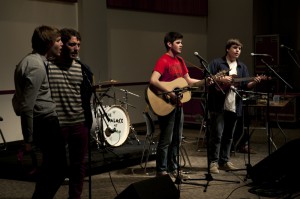Wacky Wednesdays: Stoneleigh Lanes
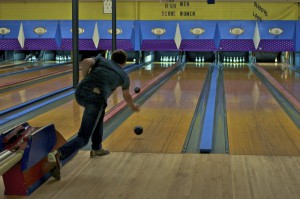 Like bowling but wish it was different? Search no more! Down the street from Loyola lay Stoneleigh Lanes, which features 16 lanes of duckpin bowling. Yes, you heard me correctly: I said duckpin bowling. And no, it doesn’t involve ducks. Although the rules are similar to normal ten-pin bowling, duckpin bowling is not the bowling that you may be used to playing. Voted the “Best Bowling Alley” by Baltimore Magazine, Stoneleigh Lane’s duckpin bowling is a new and interesting way to bowl!
Like bowling but wish it was different? Search no more! Down the street from Loyola lay Stoneleigh Lanes, which features 16 lanes of duckpin bowling. Yes, you heard me correctly: I said duckpin bowling. And no, it doesn’t involve ducks. Although the rules are similar to normal ten-pin bowling, duckpin bowling is not the bowling that you may be used to playing. Voted the “Best Bowling Alley” by Baltimore Magazine, Stoneleigh Lane’s duckpin bowling is a new and interesting way to bowl!
New Releases 1.25.11
 This week brings a blend of up-beat and mellow Indie that will be sure to cleanse your musical palate. Highlights of the week include a bunch of happy hipsters called Grouplove and a spacey beach group called Young Galaxy. Stay tuned for more upcoming releases!
This week brings a blend of up-beat and mellow Indie that will be sure to cleanse your musical palate. Highlights of the week include a bunch of happy hipsters called Grouplove and a spacey beach group called Young Galaxy. Stay tuned for more upcoming releases!
Loyola Sports Roundtable: Swimming
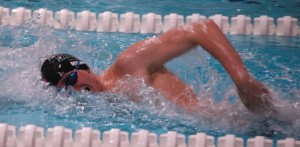 Swimming can be a very hard sport to follow but when you do develop the skills to be an avid and loyal fan, the benefits are endless. Loyola men’s and women’s swimming this year has been giving students so many reasons to follow these fine young athletes. From Freshman to Senior, each swimmer and diver has been contributing greatness to the name of Loyola Sports.
Swimming can be a very hard sport to follow but when you do develop the skills to be an avid and loyal fan, the benefits are endless. Loyola men’s and women’s swimming this year has been giving students so many reasons to follow these fine young athletes. From Freshman to Senior, each swimmer and diver has been contributing greatness to the name of Loyola Sports.
Men’s Basketball Find Some Rhythm But Is It Enough? Part 2
 In Part 1 of this two part series, I spoke about Loyola’s offense needing some more passion and charisma. When looking at the other side of the court, the men’s basketball team seems to be lacking the power and strength that is needed to stay inside the paint and to keep other teams from penetrating and scoring. Also, it seems that the Greyhounds are not doing a great job at rebounds, which is a skill in which any nationally ranked team excels.
In Part 1 of this two part series, I spoke about Loyola’s offense needing some more passion and charisma. When looking at the other side of the court, the men’s basketball team seems to be lacking the power and strength that is needed to stay inside the paint and to keep other teams from penetrating and scoring. Also, it seems that the Greyhounds are not doing a great job at rebounds, which is a skill in which any nationally ranked team excels.
Thursday’s Movie Night Features Walk The Line
Men’s Basketball Finds Some Rhythm But Is It Enough? Part 1
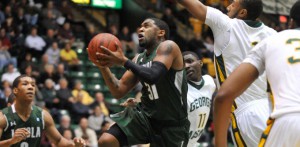 Thus far, it can be said that Loyola Men’s Basketball Team has not had some of the greatest breaks when it comes to getting wins instead of losses. The Greyhounds, as of today, are now 8-9 overall, having a 4-3 record in our conference, the MAAC. However, it is something that can not be totally looked upon with resentment and disappointment. The Greyhounds have had a very tough schedule since the beginning of the season, taking on #15 Georgetown and division rival, Fairfield.
Thus far, it can be said that Loyola Men’s Basketball Team has not had some of the greatest breaks when it comes to getting wins instead of losses. The Greyhounds, as of today, are now 8-9 overall, having a 4-3 record in our conference, the MAAC. However, it is something that can not be totally looked upon with resentment and disappointment. The Greyhounds have had a very tough schedule since the beginning of the season, taking on #15 Georgetown and division rival, Fairfield.
Haiti: One Year After the Quake
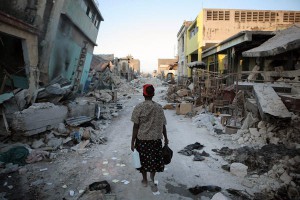 While the world was still reveling in the new year, Haiti, the poorest country in the Western hemisphere, was struck by a devastating 7.0 magnitude earthquake that happened west of Haiti’s capital, Port-au-Prince, and the surrounding areas on January 12, 2010. At least 52 aftershocks were recorded within the following weeks, leaving approximately three million people affected by the disaster and over 230,000 fatalities. The earthquake also caused major damage to the structure of Haiti – many significant landmarks and buildings were destroyed, including the Presidential Palace, the National Assembly building, the Port-au-Prince cathedral and the main jail.
While the world was still reveling in the new year, Haiti, the poorest country in the Western hemisphere, was struck by a devastating 7.0 magnitude earthquake that happened west of Haiti’s capital, Port-au-Prince, and the surrounding areas on January 12, 2010. At least 52 aftershocks were recorded within the following weeks, leaving approximately three million people affected by the disaster and over 230,000 fatalities. The earthquake also caused major damage to the structure of Haiti – many significant landmarks and buildings were destroyed, including the Presidential Palace, the National Assembly building, the Port-au-Prince cathedral and the main jail.
Vote WLOY for College Radio Woodie Award!

We need your help! MTVU is taking votes for their annual Woodie Awards and we need you to vote for WLOY! Loyola has a history of being nominated for Woodie’s if you look at Oh the Story! back in 2009 when they were a finalist for best campus band. The voting is being hosted by RateMyProfessor. Please go to their site and vote for WLOY Loyola Radio.

